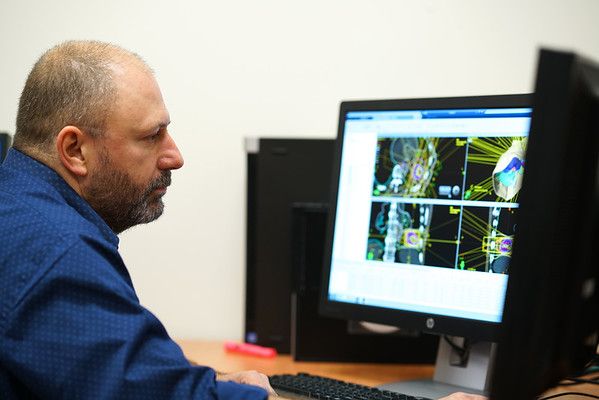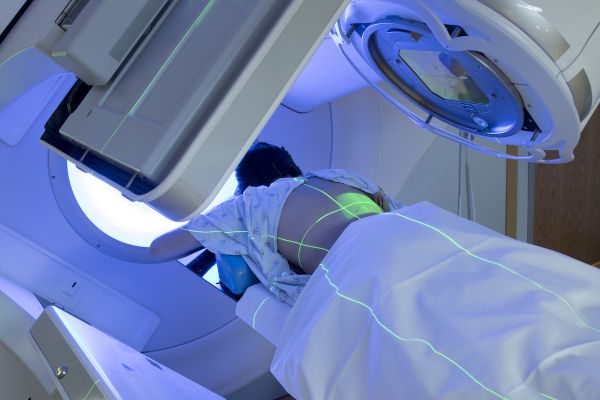While undergoing radiation treatment, you may never meet your dosimetrist.
You might not even know you have a dosimetrist, but they play a key role in how effective your radiation treatment is at fighting your tumor.
A medical dosimetrist is responsible for creating a radiation therapy treatment plan for patients. A radiation oncologist will prescribe a particular dose of radiation based on the location and size of your tumor. A dosimetrist then comes up with a plan for delivering the prescribed dose to the target area while trying to avoid impact on the surrounding normal tissue and organs. “It’s important because if we can do that effectively, then we can minimize the side effects the patient has and make their treatment easier for them to get through,” says Lee Hales, Chief Medical Dosimetrist at Roswell Park Comprehensive Cancer Center.
The skill sets of a dosimetrist are a mix of scientist, engineer and artist.
The science is a combination of biology, physics, and oncology, by knowing what levels of radiation a particular area of the body can handle.
Never miss another Cancer Talk blog!
Sign up to receive our monthly Cancer Talk e-newsletter.
Sign up!A dosimetrist applies this scientific and medical knowledge with engineering tools. “We have software that allows us to take a 3D model of the patient, which we can use to map out the tumor, the target area and all the normal tissues. I can create a virtual treatment plan using that. We use different angles and a different number of radiation beams so we can geometrically achieve the treatment that is needed. There are also algorithms inside the computer that allow us to optimize our treatment plan,” says Hales.
No two tumors or patients are the same. Hales uses his two decades of experience and expertise to create a personalized plan for the patient. “Each patient is a unique puzzle, so to achieve those very precise, scientific numerical goals for each patient, it often requires a different approach to do so. That’s where the art comes in. By looking at the patient and the anatomy, I’ll use my experience to come up with something a little different for everybody that still meets all the goals, but is ideally conformed for the individual patients,” says Hales. “It’s that mixture of hard science with the little bit of freedom needed to do each case individually that I really enjoy.”
For over six years, Hales has worked with The American Association of Medical Dosimetrists (AAMD), an international professional organization with approximately 4,000 members. He started as a volunteer, then a regional board representative and the board of directors. Recently, Hales was named President-Elect of the AAMD. “I’ve always been a big supporter of the organization, and I’m always trying to send my staff members to the regional or annual meetings for educational credits and the chance to interact with their peers,” says Hales.
Hales will serve for three years, first as president-elect as he works alongside the current president. In year two, he will take over as president in an advisory role and then return to the board of directors in year three as past president. “Being involved in the leadership of the AAMD will allow me and my peers to actively navigate the changing health care environment so that we can continue to provide great care for our patients,” says Hales.





